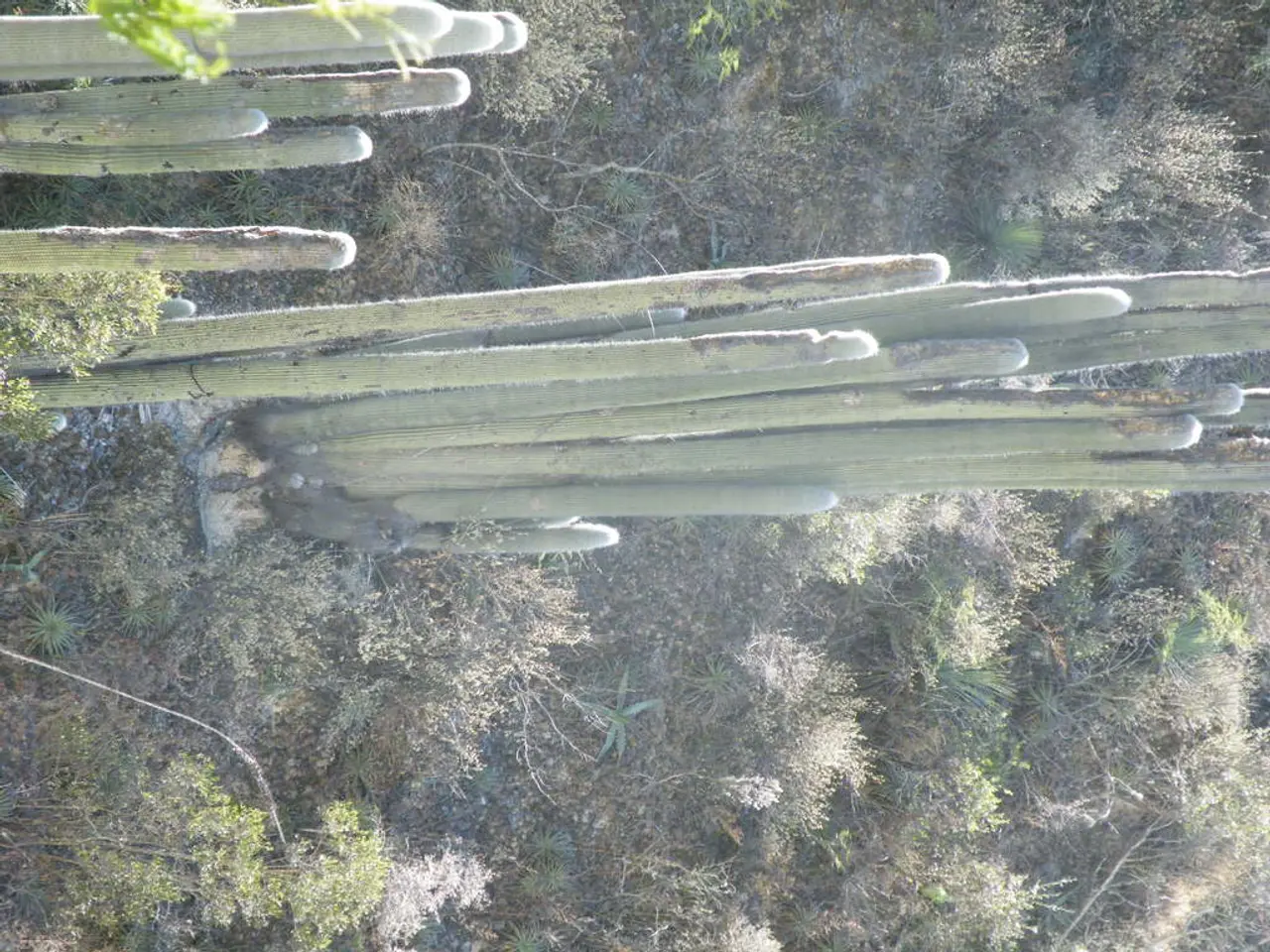Discovering Organ Pipe Cactus National Park - A Visit to this Fascinating Desert Haven
Nestled within the Sonoran Desert, Organ Pipe Cactus National Park offers a unique blend of scenic beauty and diverse wildlife, making it a haven for nature enthusiasts. This International Biosphere Reserve, located in Arizona, USA, is home to a variety of species that have adapted to thrive in this harsh yet biodiverse environment.
Bikers visiting the park should be mindful of drivers who may be distracted by the breathtaking scenery. It's advisable to carry a secure lock if leaving your bike temporarily anywhere in the park. For those seeking guided exploration, Ajo Mountain Van Tours are available during winter, providing access to the park's most scenic areas. Due to limited space, it's essential to reserve seats early.
The park's visitor center hosts Patio Talks, where topics ranging from human history, ecology, and geology of the area are discussed. For a more immersive experience, Guided Hikes and Special Lectures are offered by local experts, with a current schedule available at the visitor center.
Winter and Spring are the busiest times of year, with lush wildflower displays after a wet winter and daytime temperatures averaging in the 60s F and nights going down to the 40s F. Evening programs are informational entertainment events held at the Twin Peaks Campground amphitheater. However, it's important to note that Organ Pipe Cactus National Park's weather can be unpredictable, with hot, cold, wet, and dry weather possible at any time of year.
The park's unique wildlife species are a testament to its conservation efforts. Among the most notable are the Sonoran pronghorn, a rare and endangered desert antelope known for its speed and agility, and the lesser long-nosed bat, which serves as the primary night-time pollinator for the saguaro cactus. Other common species include javelinas, bighorn sheep, bobcats, kangaroo rats, jackrabbits, and a diverse array of bird species, reptiles, and amphibians.
**Summary Table of Unique Species:**
| Species | Notes | |-----------------------------|-------------------------------------------------------| | Sonoran pronghorn | Rare, endangered desert antelope | | Lesser long-nosed bat | Specialized pollinator of saguaro cactus | | Javelinas | Common desert mammal shared with Mexico | | Bighorn sheep | Adapted to desert mountain terrain | | Bobcats | Predators in the ecosystem | | Kangaroo rats, jackrabbits | Desert-adapted rodents and lagomorphs | | Diverse birds and reptiles | Including tortoises, lizards, and numerous bird species|
Summer and Fall temperatures can be extremely hot, reaching the low 100s, with hiking during mid-day not recommended. The end of July through September is the monsoon season, with potential for dramatic lightning and thunderstorms. Despite these challenges, the park's unique wildlife highlights its role in conserving unique desert wildlife species not commonly found elsewhere.
There are many miles of roads open to bikers, including the 21-mile-long Ajo Mountain Drive and Puerto Blanco Drive leading to the Pinkley Peak Picnic Area. For those who prefer hiking, the Visitor Center Nature Trail, Palo Verde Trail (pet friendly), Desert View Trail, Campground perimeter trail (pet friendly), Victoria Mine Trail, Estes Canyon Trail (Ajo Mountain area), Bull Pasture Trail (Ajo Mountain area), Arch Canyon Trail, and Alamo Canyon Trail are some of the easily accessible hiking trails.
Whether you're a nature enthusiast, a history buff, or simply seeking a unique adventure, Organ Pipe Cactus National Park offers a wealth of experiences waiting to be discovered.
- The park's unique landscape, teeming with diverse wildlife, attracts nature enthusiasts, making Organ Pipe Cactus National Park a haven for explorers.
- Bikers should be cautious of distracted drivers while traversing the park, and carrying a secure lock is advised when temporarily leaving your bike.
- Ajo Mountain Van Tours offer guided exploration of the park's most scenic areas during winter, but seats should be reserved early due to limited space.
- The visitor center hosts educational talks on the area's history, ecology, and geology, and guides are available for more immersive experiences.
- Winter and Spring are the busiest times in the park, with lush wildflower displays and milder temperatures, while the weather can be unpredictable at any time of year.
- The Sonoran pronghorn, a rare and endangered desert antelope, is one of the park's most notable wildlife species, alongside the lesser long-nosed bat, which pollinates saguaro cactus.
- Other common species within the park include javelinas, bighorn sheep, bobcats, kangaroo rats, jackrabbits, and a diverse array of bird species, reptiles, and amphibians.
- Summer and Fall temperatures can reach the low 100s, making mid-day hiking a challenge, while the end of July through September marks the monsoon season with potential for dramatic storms.
- There are numerous roads open to bikers, including Ajo Mountain Drive and Puerto Blanco Drive, leading to scenic locations like the Pinkley Peak Picnic Area.
- For hikers, trails such as the Visitor Center Nature Trail, Palo Verde Trail, Desert View Trail, Victoria Mine Trail, Estes Canyon Trail, Bull Pasture Trail, Arch Canyon Trail, and Alamo Canyon Trail offer easily accessible paths to explore the park's natural beauty.
- Organ Pipe Cactus National Park provides a wealth of experiences for those interested in nature, history, or unique adventures.
- With its breathtaking views, diverse ecosystems, and rich wildlife, the park offers opportunities for travelers to venture off the beaten path and connect with nature.
- The park's conservation efforts have helped preserve a variety of species, such as the Sonoran pronghorn and lesser long-nosed bat, that are not commonly found elsewhere.
- A map of the park's trails, canyons, and other attractions can serve as a valuable tool for travelers planning their exploration of this unique national park and its surrounding lifestyle, home-and-garden, and travel offerings.




